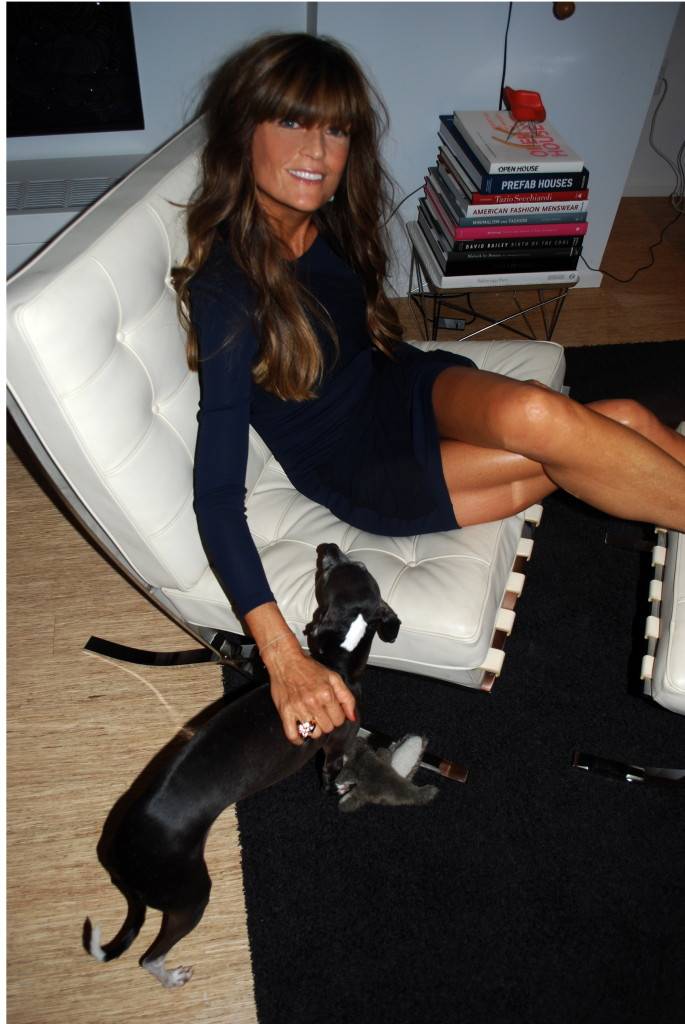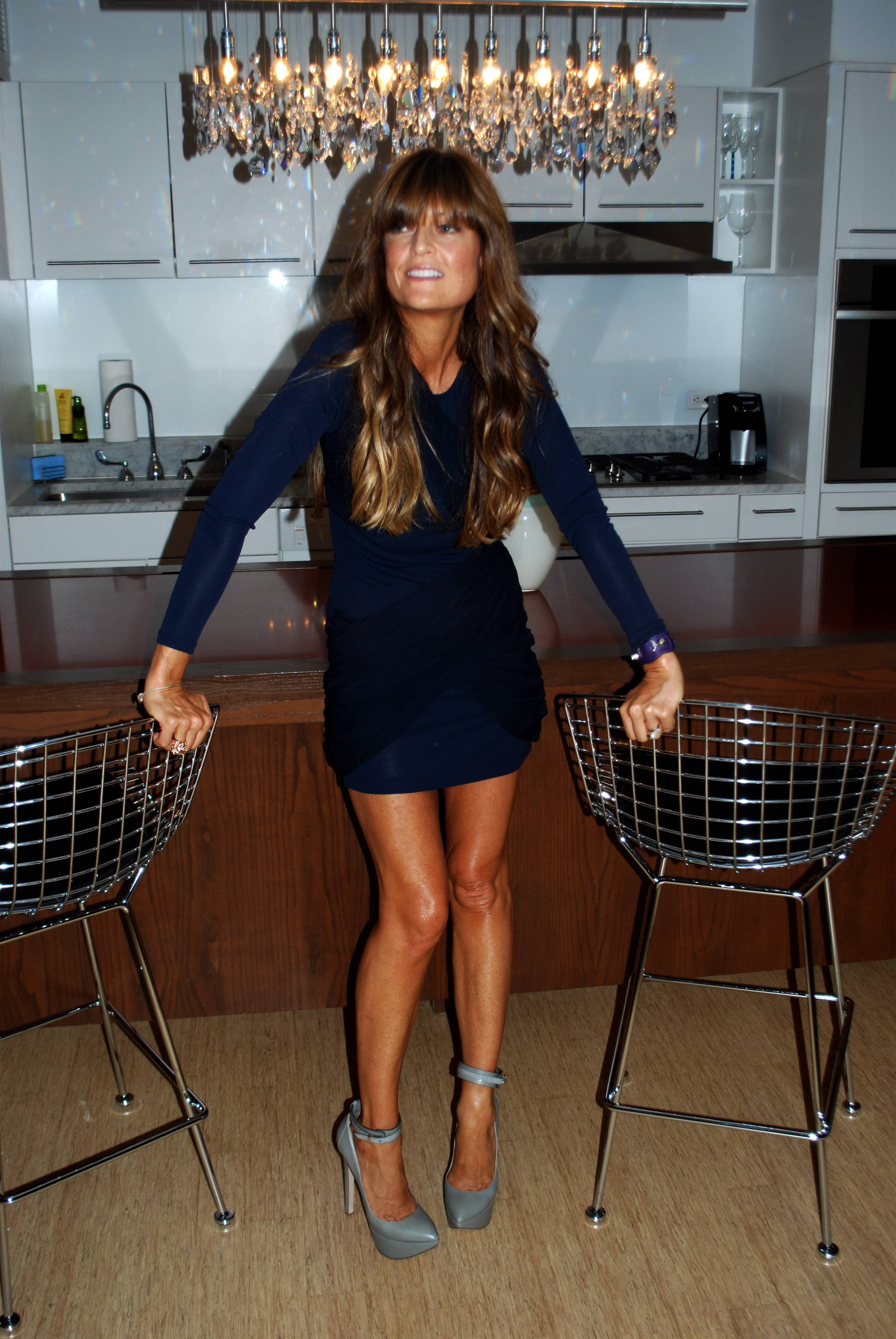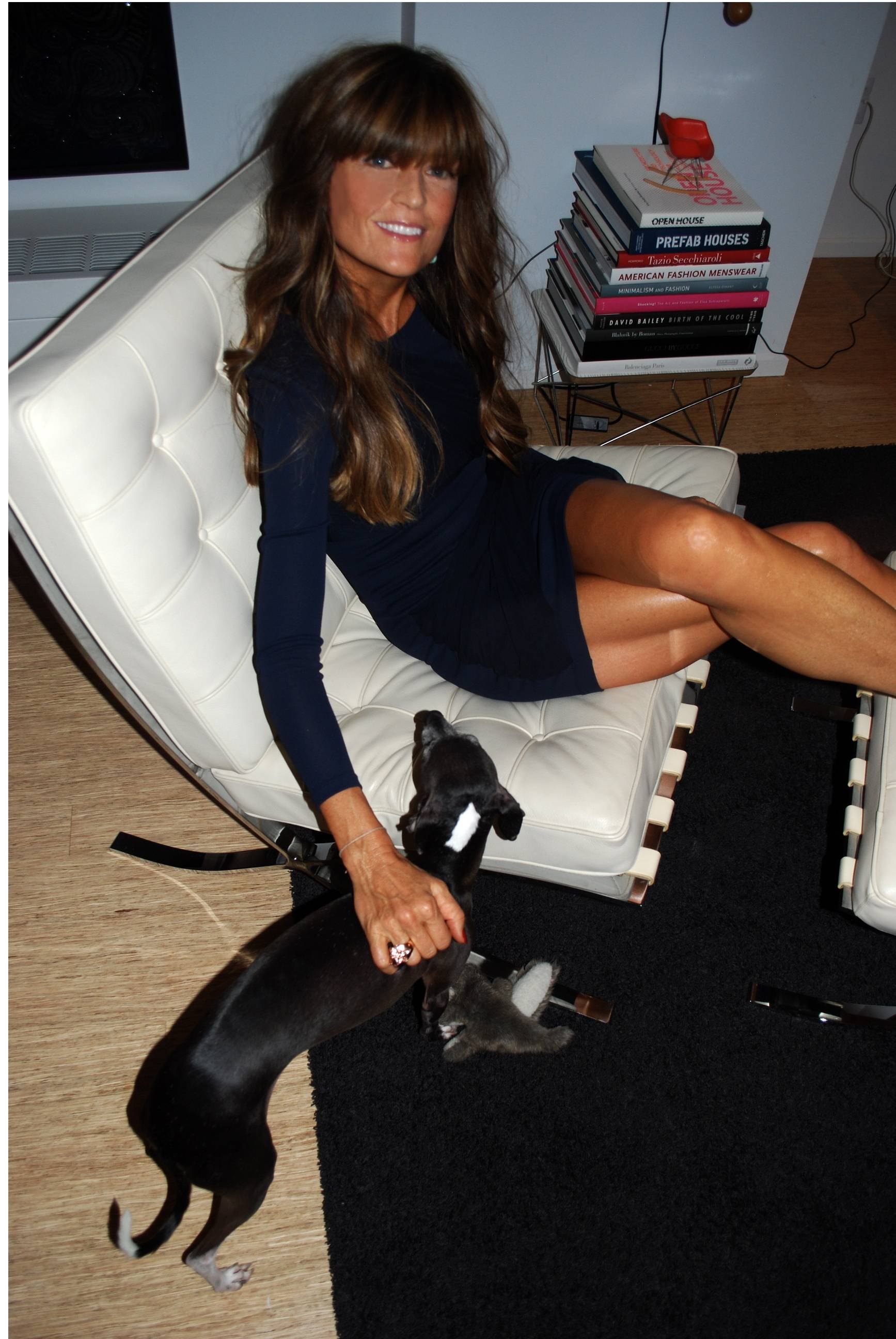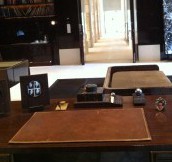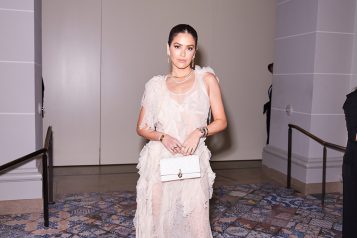You’ve seen her shoes on the likes of everyone from Beyonce, Lady Gaga, Kelly Osbourne, Fergie and countless other celebrities. What is more interesting than the celebrities rocking her coveted footwear is the woman behind the name. Ruthie’s story begins like many great designers before her; she designed shoes at Reebok which lead her to design shoes at UGGS and Tommy Hilfiger. After years of successfully helming other fashion labels shoe’s, Ruthie launched her own company in 2006 and hasn’t looked back since. It’s been her unparalleled dedication to designing footwear on her own terms that has separated Ruthie Davis from her peers and it’s why her company still stands today. When I entered Ruthie Davis’s Chelsea office for our interview, Ruthie herself stood by her desk looking gorgeous in a form fitting hunter green dress and a pair of her signature heels. “Would you like a glass of champagne?” she kindly asks with a smile. A few weeks later she opened the doors of her apartment exclusively for our cameras to get a peak inside her amazing collection of shoes and bags. Despite having experienced growing success over the years, Ruthie Davis has just begun. In her most revealing interview yet, Ruthie talks openly about her amazing career, the trials and tribulations of starting a company from scratch and her no nonsense advice for breaking into the fashion industry.
How did you get your start in the fashion business?
It’s kind of an interesting segway for me getting into fashion because I’ve always as many girls would say, I love fashion, I know that’s not totally unique. But growing up I was an athlete and I loved sports. I was a big skier, tennis player, field hockey, basketball, softball, whatever you name it. One of the first areas I really kind of expressed myself from a fashion stand point was through my athletic outfits. So I used to think when I was going skiing it was a black tie event, I had like the one-piece cool cat suits. I’m from Connecticut so it’s not exactly the fashion capital of the world but a lot of people do sports in Connecticut ya know? Very New England.
My first job in the industry was actually at Reebok. My first foray into fashion was working on athletic shoes and that segwayed into me working on the classics at Reebok. In the 90’s I took the white classic Reeboks that were really popular and made them more fashionable by adding the colored bottoms, the different materials on the uppers, etc. A big term we used in the 90’s was “hooked up,” meaning you hooked up with the apparel companies to create a full look. So I would make sure they hooked up the sneakers with the bubble jackets, bright yellows, and reds. All those trends that were really hot at the moment.
That is so cool, that was definitely the style back then. You saw a lot of that in music videos, magazines, everywhere.
That was the style back then, yes. I was really into street fashion and I’ve always loved color and materials and taking a good product and adding what I call the sizzle to the steak. They used to call it the 5411 because it cost $54.11. At Reebok they called me a cool hunter, because I would research the trends. At athletic brands you would get these jocks or their industrial engineer designers, who are not very fashiony. I used to be fighting for the fashion, like no people are wearing these for fashion not for sport.
It seems like you really brought the edge to it.
I brought the edge in fashion at Reebok. And then that lead to my next job at UGGS. Where I took the same classic sleepy UGG boot, the surfer dude boot and I turned it into a fashion brand.
That’s right! I remember that.
And I did it through marketing and design; again I added the sizzle to the steak. You had that classic UGG boot, I didn’t invent that, that was already there, but I exposed the sheepskin on the seam, put the sheepskin on the outside etc. I did different things to give it an edge.
And that was right around the time when UGGS culturally exploded. They were everywhere. I didn’t know you were at UGG during that time, that’s incredible.
I’d like to think I had something to do with that because I was the first designer/marketer they ever hired. It took three years, I started at UGG in January of 98 and in 2001 they took off.
That sounds about right to me. That’s when you started seeing all the celebrities wearing them in the magazines and tons of girls everywhere started wearing them in the streets.
It was the first time they had put a budget against marketing and design because before that it was a surfer dude brand, they didn’t do any marketing and design.
Most people don’t know it was a men’s surfer brand before it became synonymous here in the states as a female boot. I went to school in New England and all the girls wore UGGS, they were very popular at one point.
Oh yeah. I remember when I started at UGGS, I tried to give my nieces or whomever UGGS for Christmas cause I got a discount before it took off and they were like “Oh no thanks.” They didn’t love it but within a few years they were begging for them, it became this phenomenon. And a lot of it was putting it on the celebrities and it was the first time they hired a PR in New York while I did the celebrity thing in L.A.
I literally remember seeing pictures of celebrities wearing UGGS on the beach, in Malibu, Pam Anderson was a big fan, still is.
The original celeb wearing UGGS was Pam Anderson. She was the only one, because she’s basically a surfer dude girlfriend. Once we got them on east coast girls and people like Kate Hudson it really took it to a fashion level.
Wow…amazing.
So how did I get into fashion? I had these experiences and the whole time I was working on these other brands, I kept thinking one day I’m going to have my own brand. I had a lot of great ideas, I made a lot of money for these companies and this is why I always recommend to young people to work for other people, learn on someone else’s dollar. Because I had this confidence, I knew that if I had a good idea I could design the product, create a marketing plan and make it happen because I had these experiences.
I was going to launch my brand and then 911 happened, everyone said it’s not a good time; the economy is messed up right now. Then Tommy Hilfiger started calling and they wanted me to come to New York and I went there for a few years. I launched Tommy Girl shoes, which were really successful. They moved me to New York and I was like OK I’d work for Tommy, get a fashion brand under my belt and then I’m going to launch. Within a year and a half, two years I was working my butt off at Tommy, I was constantly on a plane going to China or Brazil to make the shoes, it was a lot. At the time I was Senior VP of Marketing and Design for Tommy Girl shoes and I’ll never forget the day my husband said to me “Do you want your bosses job or do you want to be Tommy Hilfiger?” I said I want to be Tommy Hilfiger and my husband said well you better get busy (laughs).
Now we fast forward to 2012. Were here in your show room in New York City, you have a successful line, your shoes are unlike anything out there on the market which is something not many of your peers can say. Why did you decide to produce your product in Milan? You’re an American girl; why not make the shoes in the U.S?
It’s simple; luxury shoes are only made in Italy. I actually had a lot of connections in China, cause I had made shoes there for many brands. I talked to some people and did my research in the luxury market and people told me if I had shoes produced in China it’s not going to happen. I knew I wanted to make beautiful high-end shoes plus I was tired of going to China (laughs) it’s a long plane ride.
That’s the thing when I went into my own brand it wasn’t like I’d been in the industry, had all these connections and it was easy. I was doing a totally different kind of product before that was sold at Macy’s and Nordstrom’s, it wasn’t luxury. I had no connections in Italy, no connections with the buyers, nothing.
You essentially had to start from scratch.
From scratch. But I had that confidence against all odds, I knew I could make something happen. I knew the shoe industry and what I was doing, I was naive about the fashion industry. Like the Bergdorf Goodman fashion industry, I was a little naïve. A lot of things people wouldn’t do if they knew everything, so it’s probably a good thing I was naïve.
In the first few years of your business what was your biggest challenge and how did you solve it?
I think the number one challenge at the start of my business is the same as it is now, with an asterisk (laughs). The asterisk is going to be, I don’t care who you are, what your deal is, the financials are always going to be a challenge. But finances in any business is challenging, putting that aside I think the other biggest challenge is the retailer. I’m not going to lie, production can be really trying; managing my factories in Italy, making sure the shoes look the way I want, getting the quality, it’s a huge challenge. But blood, sweat, tears, traveling over there, you can get through it, what’s really hard is that you can’t control the buyer. I can’t control a buyer to buy my shoes. The retailers are very tough, they can be very fickle, they are risk averse and there’s no rhyme or reason why they take one brand and not another.
There are retailers that for whatever reasons don’t buy my shoes where the customer would want them. The customers are like why aren’t you at this store? It’s always a challenge to get through the buyer.
Have you ever considered opening up your own store?
We are looking at different spaces. And we do want to do that but its more for marketing, I don’t see that as the vehicle for selling the product, it’s more of a marketing vehicle. Were in 30 countries, it’s going well but it’s a constant challenge and you are only as good as your last season. It also hard when you are a small brand because it’s comes down to there’s only so much real estate on the selling floor. You’ve got all these brands like Gucci, Prada, Lous Vuitton, those types of brands. They usually require the store to carry their clothes, bags, etc if you want to carry X amount of our shoes.
It’s much deeper than what people think.
Much more. You have stores that might not even like some of the shoes they are carrying, but they have to. It’s not all about the favorites; a lot of it is political stuff. So that’s the tough challenge.
Social media has become a big part of your brand. Everyday on Twitter and Facebook, people can see a different shoe that you’re highlighting or something that you are working on, whether you are in the office or in Milan. You are one of the few fashion brands out there that really gets what your customer wants to see and you know how to get them engaged, which is vital to a successful business these days. How do you go about daily use of your social outlets?
It’s a combination of a few things. I’m proud of my team and I have a social media wiz on staff that is really good at figuring out what works and what doesn’t work. Through trial and error we came to this formula of a new shoe every day. I have to admit it’s usually my leg; I keep moisturizer in the corner over there (laughs). Some days I’ll walk into the office and he’ll have shoes lines up and Dan’s like time for a photo shoot! We’ve got a good formula going.
How has that changed the way you connect with the consumer?
Through trial and error he did different things. Like day in the life of pictures, pictures of this, pictures of that, other celebrity shots in magazines, the customer didn’t like those as much. Even a picture of Beyonce in my shoes would not get as many likes as just my foot in one of our shoes on Facebook or Twitter. Dan’s figured out this brilliant thing where the picture of shoes gets so much feedback. People want to see the shoe, the shoe product is king and we get more likes on Facebook than major brands. It’s not just about the likes you can get; it’s about how many people are talking about you.
It’s data that you can break down and really get into the specifics of how people are receiving what you are putting on the Internet.
Exactly. It’s funny because we’ve noticed some people are copying our formula but you know that’s bound to happen.
The way you handle your social media creates an intimate and authentic type of engagement with the consumer that you don’t see in a lot of other brands, especially footwear.
I like sharing on social media; I like being an inspiration to people because people inspire me. Girls on the street, girls on instagram, etc inspire me. I share what I’m doing on any given day, when I’m in the office on a Sunday designing a shoe I’ll share a pic of my inspiration board or my sketches. I like to educate on my blog, I talk about how you make a shoe. We get a lot of girls (and some boys) that like the shoes because they see that I’m authentic, I’m creating something isn’t watered down. I’m not corporate and they like that, it makes them happy. I believe it’s inspiring to people when you are your authentic self. I don’t pretend that I’m anybody special, I’m just a normal girl and you can craft your dreams too.
One thing we talked about in our last interview was you are different from a lot of other designers in that we don’t see you on a different red carpet or step and repeat every night of the week. With other brands, we know the designer better than we know the product. Was that a conscious decision early on in your career helming your own brand?
No, you are right. That’s just not me. I’m starting to get out a little bit more; Dan really helps me with that. I used to not be out at all because I was behind the scenes making shoes. I had to get my business to a certain point first. I’ve got a great brand positioning, a solid team, I can manage the team and I don’t have to do everything myself. But until its there in its fully glory you can’t attract people to want to even work on it, does that make sense?
Absolutely.
So I had to do everything in the beginning because why would anyone come work for it? They’d be like I don’t even get it. So it wasn’t until I got it to a point that I could then get people excited about working on it so now I can go out more.
What’s next for Ruthie Davis? Where do you see your brand going in the next few years? What would you like to keep consistent about your brand?
I want to first and foremost be known as a shoe designer, because to me the shoes are the foundation of the house. It’s the foundation of your body; it’s like the soul. I’m open to taking the DNA of the brand and putting it against other products that I love be it watches, sunglasses, etc. I definitely want to have Ruthie Davis stores, I would love to some day have apparel. I would want it to all be really authentically specific to what I am all about, it has to have a purpose. I don’t want to branch out my brand just for the sake of expanding.
I have bags now but they aren’t just any bags, a lot of them are miniature. They carry your iPhone or the bigger ones carry your laptop. There’s a functional element to my bags. I just don’t want to do products for the sake of doing products. But I am of the belief you can be like Christian Louboutin or Manolo Blahnik and do one thing and do it right. Target by Ruthie Davis, sure, I’d even consider doing a lower priced line, I’m open-minded.
The Ruthie Davis woman to me is a luxurious woman; your shoes are not for the faint of heart. You have to be confident wearing them, they are statement shoes.
No it’s not (laughs) you are right. And I’m not looking to do a watered down version for everyone.
Because once you do water it down, then that’s not you anymore.
Exactly, it’s a contradiction in terms. Everybody assumes that when someone’s in business they’re goal is to be huge, open stores everywhere, lots of volume, mass retailing etc. That’s not my goal, I want to enjoy my life, and I want the product to be inspiring. As long as I can have a nice apartment, take a few nice vacations a year, I’m good.
There are tons of new young designers popping up everyday. I even had someone email me the other day asking how to break into the fashion business. What do you think a young designer needs to make it in such a saturated market? Work ethnic, personality, education, etc it’s a lot that goes into being able to start something from scratch. For example I remember when I interviewed June Ambrose, she said everyone wants to be Stylist now. People really dream now bigger than ever before. What is your advice for someone trying to get into the fashion business?
I mean, I tell you the number of emails we get from young designers is like out of control. (laughs) I’ve had a lot of young people, people in there twenties work for me and I think with the way the culture is now, everything’s instantaneous. With the internet, they want it all and they want it right now. The way I was brought up, you liked working for a goal. That’s why I run marathons, you train for a long time and you have a big goal. I would really advise young people to just take a deep breath; you’ve got a whole lifetime ahead of you, be patient. The only way you are going to be successful in the fashion industry is you are going to need a lot of tools in your hardware kit.
You need to understand the business, you need to understand some numbers and you need to understand marketing and merchandising. It’s all about seeing the bigger picture, just sketching shoes or a dress is not enough. But if that’s what you do then great, work for a larger company. And when you’re sitting in a meeting with the marketing and sales people, you should look at them and be listening. Working for a successful company is like getting an MBA for free. I really advise people to soak up that kind of work experience and learn. This whole theory that your first job is who you are is wrong.
Pay your dues and learn about the business! My assistant right here wants to be an interior designer; I’ve already had her do a bunch of things that are interior design type projects. There’s no difference between this firm and an interior design firm, you’re learning the same things. You don’t need to go right into a fashion job in the beginning, you can learn a lot by doing different things that will all help you in the end.
I hope there’s a sea change because one thing I tell my teams here in the U.S and in Italy is that yeah I’m Ruthie Davis the figurehead isn’t that fabulous, well guess what? It’s not fabulous. The team is what makes me fabulous and I know that sounds cheesy but young people need to understand that you don’t need to be the figurehead. You can be apart of a team and it’s just as rewarding and your just as important. Not everyone can be Proenza Schouler or Narcisco Rodriguez, you can be someone who works at a fashion house or works on a fashion brand. When I was at Reebok and UGG people were really into the team. It wasn’t I or me, me, me all the time. Now it’s I want to be a designer, I want to be a stylist, everyone wants to be a stylist because you do it by yourself. It’s an individual job.
You are correct about all of this and a lot of it is due in part because people only see the end result. They don’t know the hours of work, the grinding, the years put into becoming a brand, establishing it and making it so it can have longevity.
Exactly. It’s really all very interesting. That is my advice in a nutshell though for young people.
Photography by Raven Jones







